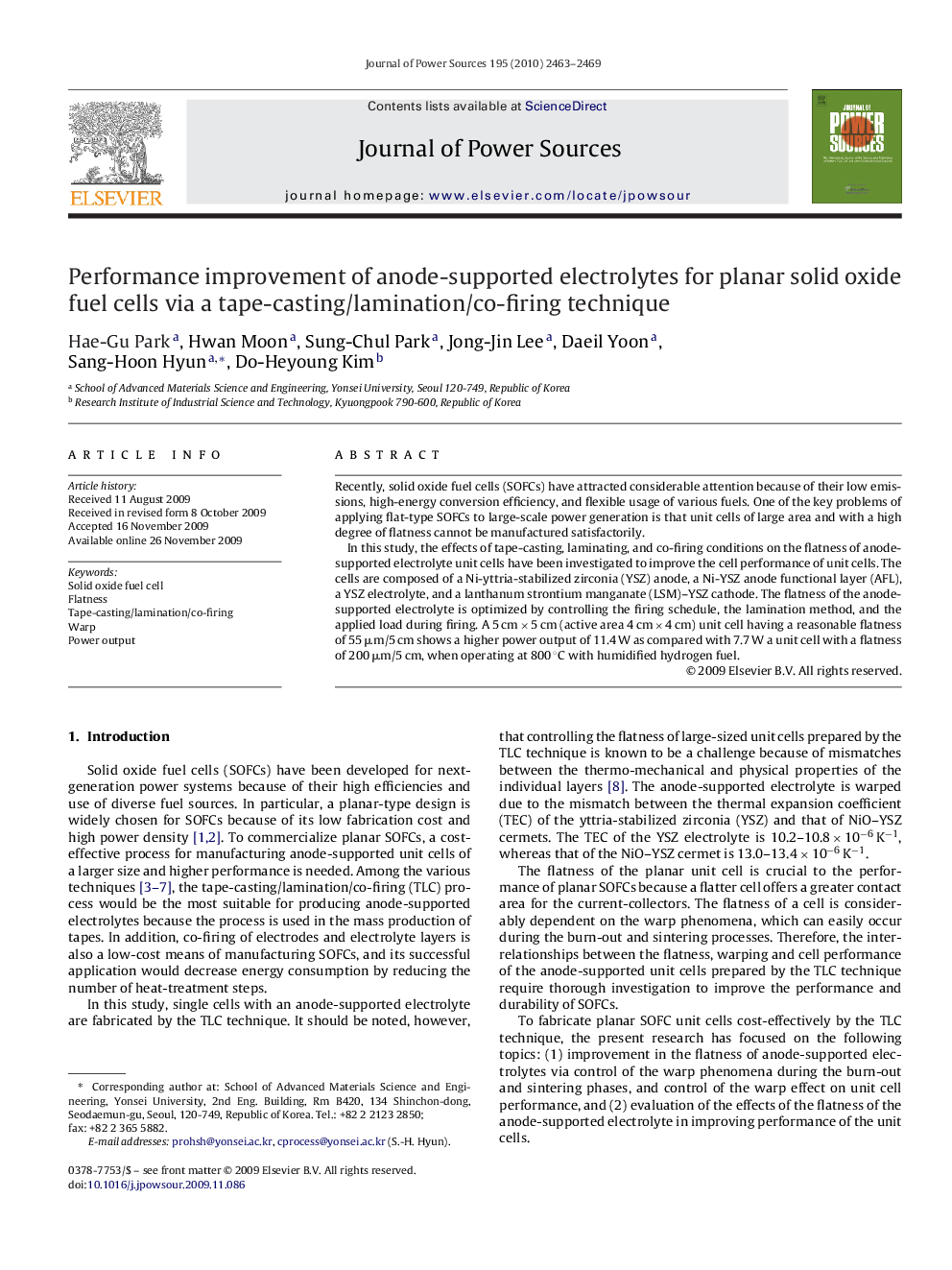| Article ID | Journal | Published Year | Pages | File Type |
|---|---|---|---|---|
| 1284988 | Journal of Power Sources | 2010 | 7 Pages |
Recently, solid oxide fuel cells (SOFCs) have attracted considerable attention because of their low emissions, high-energy conversion efficiency, and flexible usage of various fuels. One of the key problems of applying flat-type SOFCs to large-scale power generation is that unit cells of large area and with a high degree of flatness cannot be manufactured satisfactorily.In this study, the effects of tape-casting, laminating, and co-firing conditions on the flatness of anode-supported electrolyte unit cells have been investigated to improve the cell performance of unit cells. The cells are composed of a Ni-yttria-stabilized zirconia (YSZ) anode, a Ni-YSZ anode functional layer (AFL), a YSZ electrolyte, and a lanthanum strontium manganate (LSM)–YSZ cathode. The flatness of the anode-supported electrolyte is optimized by controlling the firing schedule, the lamination method, and the applied load during firing. A 5 cm × 5 cm (active area 4 cm × 4 cm) unit cell having a reasonable flatness of 55 μm/5 cm shows a higher power output of 11.4 W as compared with 7.7 W a unit cell with a flatness of 200 μm/5 cm, when operating at 800 °C with humidified hydrogen fuel.
